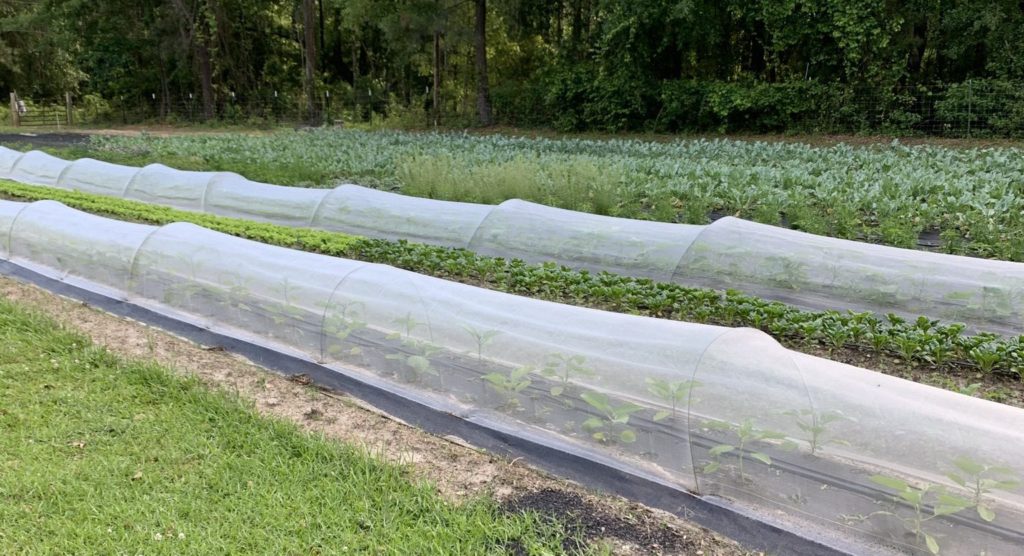Alabama Extension is providing Integrated Pest Management (IPM) tips for specialty crop producers transitioning from summer to fall vegetable crops.

Sanitation
Sanitation is an IPM level one pest prevention tactic. It includes the removal of plant or crop debris immediately after production is over. Growers should not let the vines or plant debris rot at a location while doing other tasks. Sanitation includes weed control in and around vegetable beds. If you are a high tunnel producer, control weeds inside and outside the tunnel before shifting to the new crop. Weed control becomes much more of a challenge and labor-intensive once a crop is in the ground. Regular sanitation practices can slow pressures from some insects like squash vine borers, squash bugs, armyworms, cutworms and whiteflies.
Mulch
If a producer mulched regularly during the summer, transitioning into fall is a good time to check the status of the it. Take a look under the material to note any pest buildup or excessive moisture to prevent insect or disease carry over. Proper aeration near the root zone is important.
Soil
Make sure to reapply fertilizer and rejuvenate the soil when shifting to other crops. Routine soil sampling and knowledge of nutrient levels can help cut costs with less guesswork. Keep good records manually or by using an app or computer software to automate record-keeping efforts.
Also, if any soil insecticide is required for insect pest control, this transitioning time is best for granular applications. If a farmer has a history of snails and/or slugs in their vegetables, limited soil disturbance and application of granular baits can help reduce infestations. Make sure you are not clogging the irrigation in the field when applying these soil-based insecticides.
Plan Ahead
Carefully plan your crop rotation to avoid pest buildup. Consult your county Extension office for the latest recommendations.
Also, specialty crop producers should plan to scout for disease and insect pressures weekly at the least.
Producers should also plan to keep low-cost pest exclusion fabric on hand for installing over brassica crops, especially over small plants to protect them from moths and yellowmargined leaf beetles. There are several pest exclusion resources available at www.aces.edu that provide details on how to implement a temporary system that reduces the use of expensive organic insecticides and reduces labor.









